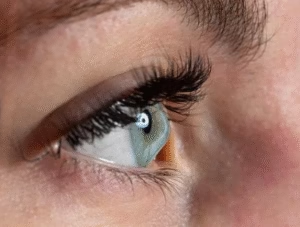

Have you ever experienced sudden, temporary vision loss in one eye? This unsettling symptom is called amaurosis fugax, and while it may last only seconds or minutes, it’sa critical warning sign your body shouldn’t ignore.
Amaurosis fugax often signals an underlying problem with your cardiovascular system. In this blog, we’ll explore what amaurosis fugax is, why it happens, and how it connects to your heart health.
Amaurosis fugax (Latin for “fleeting blindness”) is a sudden, temporary loss of vision in one eye. The vision loss typically lasts from a few seconds up to 10 or 15 minutes, after which sight returns to normal.
People describe the experience differently: some see a dark shadow, others notice a curtain closing or a fading of vision in part or all of the eye. Although the symptom resolves quickly, it can be frightening and often signals a serious medical condition.
Your eyes rely on a steady supply of oxygen-rich blood to function properly. When blood flow to the retina or optic nerve is briefly blocked or reduced, vision loss occurs.
Amaurosis fugax is usually caused by tiny blood clots or debris (emboli) that travel from your heart or major arteries to block blood vessels in the eye temporarily.
Common causes include:
Because the source of the emboli is often the heart or carotid arteries, amaurosis fugax serves as a critical link between eye symptoms and cardiovascular health.
If you experience sudden, temporary vision loss, it’s important to seek medical attention immediately.
Your eye specialist will take a detailed history and perform a comprehensive eye exam to rule out other causes of vision loss. Since amaurosis fugax often points to vascular problems, your doctor may recommend:
Early diagnosis is vital because amaurosis fugax is often a precursor to more serious events like stroke or permanent vision loss.
Amaurosis fugax is not just an eye problem—it’s a medical emergency that indicates an increased risk of stroke and other cardiovascular complications. Treatment focuses on addressing the underlying causes and preventing future embolic events.
Coordinated care between ophthalmologists, cardiologists, and neurologists is essential for optimal outcomes.
To reduce your risk of amaurosis fugax and its serious consequences:
Amaurosis fugax may be fleeting, but the message it sends is urgent and clear: your eyes can reveal vital clues about your heart health. Don’t ignore sudden, temporary vision loss—early evaluation and treatment can protect both your sight and your life
Copyright © 2023 Nexus Eye Care | Trans4m Business Consulting – Website Design & SEO | Privacy Policy | ^